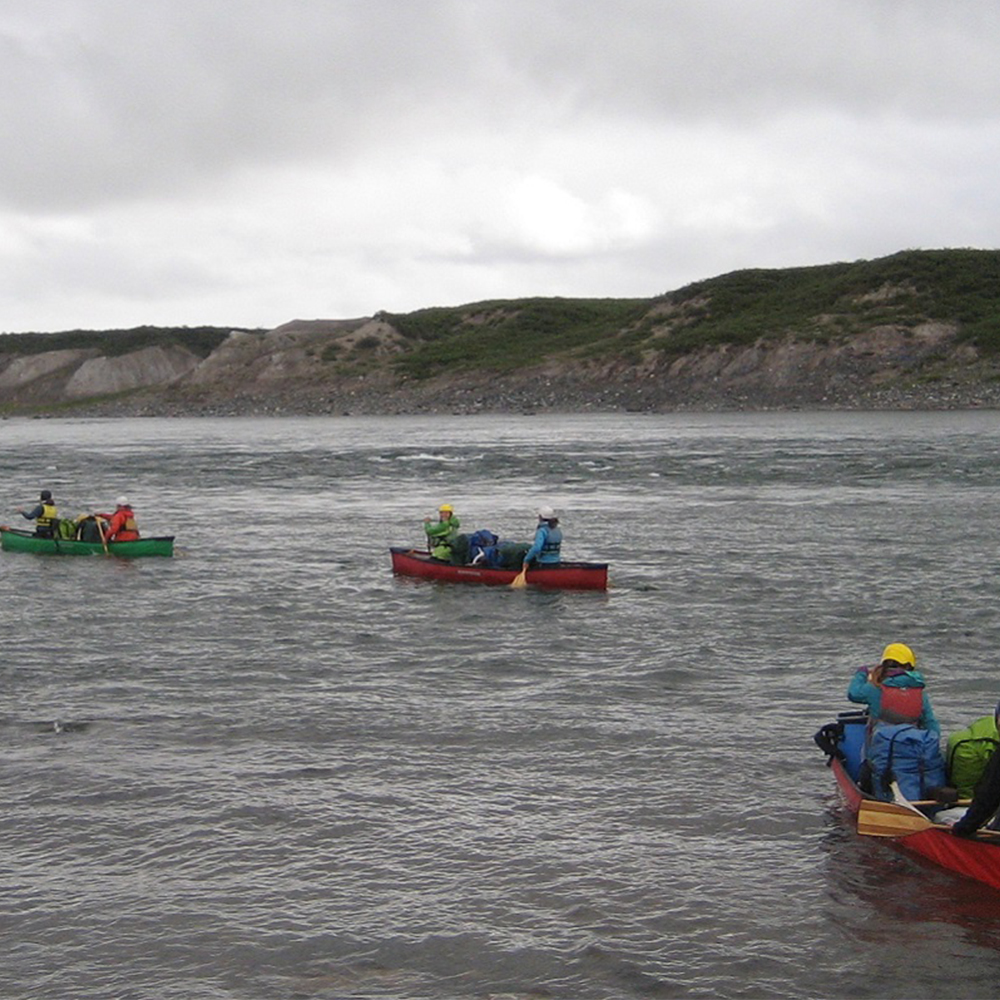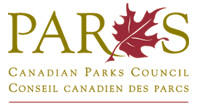About Us
About Nunavut Parks
Nunavut Parks are land areas that represent Nunavut’s unique past and present nature and culture.
Nunavut Parks are community supported protected areas and reflect what is important to Nunavummiut and are favourite places to go fishing and camping, berry picking, walking, or to relax and heal. These are places where we go with our families and want to share with visitors to Nunavut.
Nunavut Parks are essential to the quality of life for Nunavummiut. They are unique places in their cultural and natural heritage that inspire and sustain the spirit. The environmental significance and cultural value of parks merit humankind’s special care.

About The Organization
Nunavut’s Parks and Special Places Division celebrates, promotes and protects our cultural and natural sites for visitors and residents.
The Nunavut Parks and Special Places Division is responsible for planning, establishment, management, operation and promotion of Mirnguiqsirviit, Nunavut’s territorial parks and special places.
Nunavut’s parks and special places are important destinations and attractions for Nunavummiut and our visitors. They showcase our rich natural and cultural heritage locally, regionally, nationally and internationally; strengthen and support local Inuit cultures and communities through promotion and development of land-based activities; and stimulate pursuit of traditional activities in the spirit of Inuit Qaujimajatuqangit (IQ).
Under the Umbrella Inuit Impact and Benefits Agreement (IIBA) and the Nunavut Agreement (NA), territorial parks and special places are planned and managed jointly, on the basis of sound and comprehensive resource information, IQ, local and scientific knowledge, and current technological and geospatial information.
Vision
Our territorial parks and special places unite us all as Nunavummiut. Each park is unique, shaped by both culture and landscape. They celebrate the infinite beauty and diversity of our territory, and provide a haven, not only for plants and animals, but also for Mirnguiqsirviit - the human spirit. It is our shared responsibility to preserve them for generations to come. Parks and special places inspire all Nunavummiut as living reflections of Nunavut’s extraordinary environmental and cultural diversity. They enrich our education, enhance our health, and provide recreational enjoyment and other benefits. Perhaps most important, they nurture values that lie at the heart of Inuit and Nunavut culture; a deep respect for the land and its conservation, and a profound appreciation for the unbreakable bond between landscape and culture.
Our vision is a Nunavut in which these priceless resources, spaces and experiences are protected through careful, thoughtful management, and through leadership that reflects Nunavut’s real cultural strengths and values.
Goals
Protect Nunavut’s natural and cultural landscapes.
Engage the community in conservation and heritage appreciation.
Enhance visitor experiences.
Nunavut Parks and Special Places has three goals that are reflected in the specific program areas of the division (Program Development. Park Operations and Planning; and Heritage Appreciation). Nunavut Parks’ three main goals are:
Protect Nunavut’s natural and cultural landscapes. Nunavut’s Territorial Parks and Special Places system identifies, protects and promotes Nunavut’s natural and cultural heritage; its biodiversity and integrity; and its significant, unique and valued natural and cultural landscapes and resources.
Engage the community in conservation and heritage appreciation. Nunavut’s Territorial Parks and Special Places engage residents and visitors, and foster pride, understanding, knowledge, and appreciation of the Territory’s diverse and unique natural and cultural heritage.
Enhance visitor experiences. Nunavut’s Territorial Parks and Special Places promote opportunities for appropriate, safe and accessible recreation and increased public enjoyment consistent with the protection of the natural and cultural values; they are important destinations and attractions for Nunavummiut and visitors and provide direct and indirect economic benefit to communities.
Principles
Nunavut Joint, Planning and Management Committee
Qavavauq Issuqangituq
Luke Suluk
Darrell Ohokannoak
Pacome Lloyd
Simon Qingngatuk
Linda Vaillancourt
David Monteith
Vacancy
Linda Vaillancourt
Avatittinnik Kamatsiarniq: respect and care for the land, animals and the environment.
Aajiiqatigiinniq: Decision Making Through Discussion and Consensus
Qanuqtuurniq: Being innovative and resourceful
Inuuqatigiitsiarniq: Respecting others, relationships and caring for people.
Piliriqatigiinniq/Ikajuqtigiinniq: Working together for a common cause.
Pijitsirniq: Serving and providing for family and/or community. 119
Tunnganarniq: Fostering good spirit by being open, welcoming and inclusive.
Planning and management of Nunavut parks and special places follow the principles set out in the Government of Nunavut’s Sivumut Abluqta to reflect Inuit Qaujimajatuqangit (IQ) in the planning, management and operations of our territorial parks, which are summarized as follows.
Avatittinnik Kamatsiarniq: respect and care for the land, animals and the environment.
The integrity of parks’ cultural landscapes is maintained through planning and management decisions based on sound cultural landscape management practices. This includes recognition that people and the environment are inseparable.
Aajiiqatigiinniq: Decision Making Through Discussion and Consensus
Nunavut’s Territorial Parks and Special Places are planned and managed jointly, with the support of residents and communities, and full recognition of Inuit rights as defined in the NLCA and IIBA.
Qanuqtuurniq: being innovative and resourceful
The identification, planning, establishment and management of territorially significant natural areas and places reflect open, systematic, rigorous, cooperative and knowledge-based practices.
Inuuqatigiitsiarniq: respecting others, relationships and caring for people.
Policy, planning, management and operations engage Inuit organizations, communities, residents and other stakeholders, ensuring sound decision-making, greater public understanding, and allowing everyone to contribute knowledge, expertise and suggestions.
Piliriqatigiinniq/Ikajuqtigiinniq: working together for a common cause.
Partners collaborate in order to achieve the common goals of sustainability, education, tourism and health, with an appropriate balance of conservation and development objectives. Leadership is established by example, in demonstrating environmentally sound, responsible ethics and practices, and supporting and cooperating with others.
Pijitsirniq: serving and providing for family and/or community.
Parks and Special Places contribute to Nunavut’s economy through tourism and related economic development, without compromising the protection of our cultural and natural heritage.
Tunnganarniq: fostering good spirit by being open, welcoming and inclusive.
Decision-making is open, conducted with integrity, and informed by accurate, timely, and relevant information provided to all.
Nunavut Parks is accountable for ensuring implementation of legislation, NLCA and IIBA obligations, and other related plans and policies reflect these principles.
Inuit Associations and Organizations
Parks and Protected Areas Organizations

Canadian Parks Council
Canada’s national, provincial and territorial park agencies work together, through the Canadian Parks Council, to ensure that Canadians can continue to be proud of the role parks and protected areas play in preserving our country’s natural capital.

Canadian Heritage Rivers System
The Canadian Heritage Rivers System (CHRS) is Canada’s national river conservation program, giving national recognition to Canada’s outstanding rivers and encouraging their long-term management to conserve their natural, cultural and recreational values for the benefit and enjoyment of Canadians, now and in the future.

Trans Canada Trail
The Trans Canada Trail will promote and assist in the development and use of the cross country Trail – The Great Trail – by supporting success at the local level in the creation of this national network.

Tread Lightly!
Tread Lightly! and its partners lead a national initiative to protect and enhance recreation access and opportunities by promoting outdoor ethics to heighten individuals’ sense of good stewardship.
